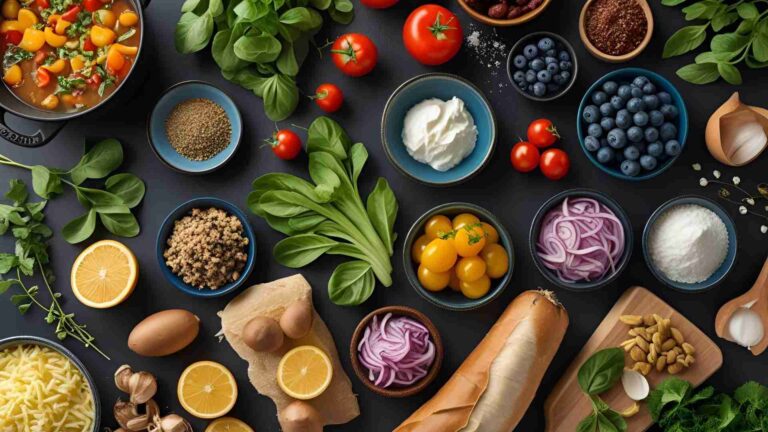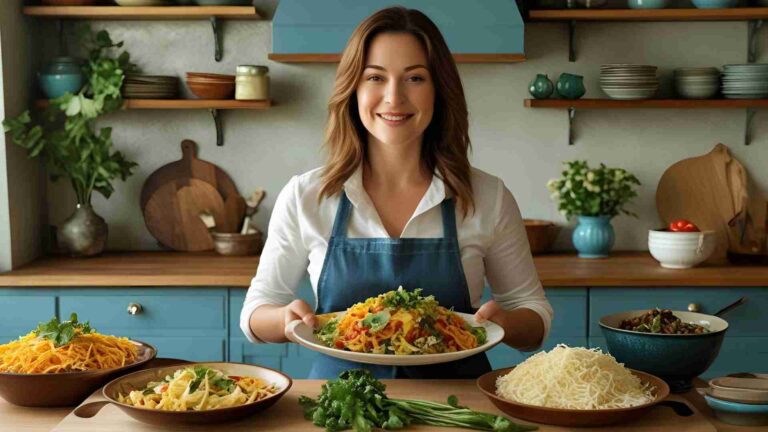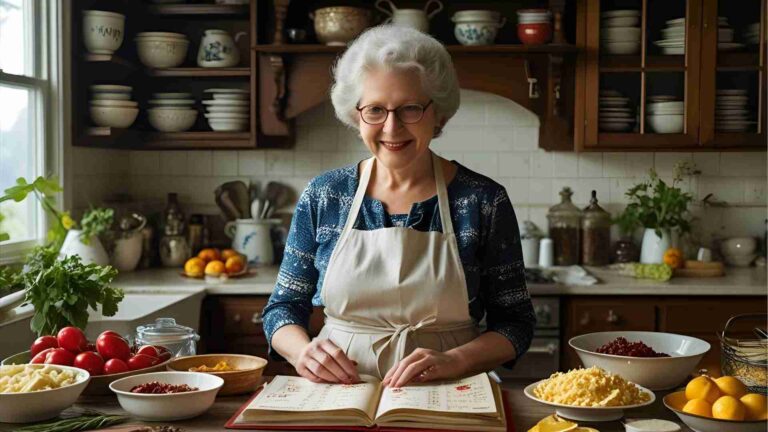Where Food Bloggers Get Their Recipe Ideas
Food blogging is a dynamic and competitive field, where creators must consistently produce fresh, engaging recipes to attract and retain audiences. At its core, the process revolves around finding inspiration, adapting ideas ethically, and transforming them into polished content that performs well in search engines and on social platforms. Successful bloggers don’t just cook—they strategize, organize, and optimize every step. This comprehensive guide explores the primary sources of recipe ideas, practical methods for adaptation, the importance of organization, essential tools and equipment, and insights from top bloggers. Whether you’re an aspiring food blogger or a home cook seeking inspiration, understanding these elements can elevate your culinary creativity.
The Core Sources of Recipe Inspiration
Food bloggers draw from a variety of reliable sources to generate ideas that resonate with readers. These aren’t random; they’re chosen for their ability to spark originality while aligning with trends and audience demands. Here are the 10 proven methods that form the foundation of recipe development:
- Cookbooks and Food Magazines: Professional chefs and writers provide tested recipes that serve as blueprints. Bloggers often modify ingredients, methods, or presentations to add a personal touch. For instance, a classic lasagna from a cookbook might inspire an eggplant parmigiana variation with adjusted quantities for dietary preferences.
- Social Media Platforms (Instagram, Pinterest, TikTok): These offer trending ideas, with over 70% of adults now discovering recipes via social media, per industry reports. Bloggers track hashtags like #recipes or #cooking to gauge popularity, then remix trends—such as turning a viral TikTok smoothie into a seasonal twist with local fruits.
- Recipe-Sharing Websites (Foodgawker, Yummly, Food52): These aggregators act as search engines for hot trends. Bloggers scan popular submissions and infuse their spin, like adapting a trending salad with unique herbs or substitutions to make it gluten-free.
- Restaurant Dining Experiences: Memorable dishes, like a standout risotto, fuel home adaptations. Bloggers analyze menus for flavor pairings and simplify them for everyday kitchens, ensuring accessibility without professional equipment.
- Family Recipe Traditions: Nostalgic dishes, such as grandma’s stew, become “blog gold” when updated with modern techniques or swaps (e.g., vegan alternatives). This preserves cultural essence while adding storytelling elements that engage readers.
- Other Food Bloggers: Strategically following peers reveals trends in topics, techniques, and equipment. Bloggers note successes and remix them—perhaps borrowing a presentation style from Pinch of Yum but altering flavors to fit their niche.
- Seasonal Farmers’ Market Ingredients: Fresh, in-season produce sparks timely recipes. Visiting markets inspires dishes built around peak items, like summer berries in a tart, aligning with reader searches for seasonal content.
- Flavor Combination Techniques: Experimentation with complementary flavors leads to originals. Tools like the free Flavor Network or paid AI options (ChefGPT, Foodpairing.ai—starting at $10/month for basic access) map ingredient connections, guiding surprises like salmon-mango pairings.
- Professional Cooking Classes: Classes expand repertoires with chef techniques, translated into home-friendly versions. Bloggers attend in-person or online sessions (e.g., via MasterClass, $15/month) to learn skills like knife work, then adapt for non-experts.
- Food Television Programming: Shows and documentaries inspire techniques and stories. Bloggers absorb ideas from programs like those on Food Network and adapt them into weekday-friendly recipes, focusing on achievable steps.
These sources ensure a steady flow of ideas, but success lies in adaptation. Bloggers must ethically transform inspirations—crediting originals with phrases like “Adapted from [source]” or “Inspired by [source]”—to avoid plagiarism and build credibility. Copying word-for-word stifles growth; instead, practice leads to confident originals that inspire others.
Why Food Bloggers Need a Constant Stream of Recipes
In a saturated niche—where food blogs comprise 42.8% of high-traffic sites with over 50,000 monthly sessions—frequent posting is key to competitiveness. Statistics show 42% of bloggers publishing 2-6 times weekly achieve strong results, versus 16% for monthly posters. Regular updates engage audiences, boost social sharing, and reinforce authority as a go-to source.
This volume demands systems: from jotting ideas in notebooks or apps like Asana, to researching trends via Pinterest searches (e.g., “fall recipes” revealing pumpkin-apple themes). Bloggers also explore culinary ratios (e.g., 5:3 flour-to-liquid for bread) for reliable bases, experiment with pairings using resources like The Flavor Bible, and align with seasons or holidays for relevance.
Organizing and Managing the Recipe Development Process
Finding ideas is easy; managing them isn’t. As blogs grow to hundreds of recipes, poor organization frustrates readers, spikes bounce rates, and harms SEO. Effective systems include categorizing by course, cuisine, diet, or season (e.g., via intuitive navigation like Cookie and Kate’s).
Professional tools streamline this. WP Recipe Maker, a WordPress plugin (free basic version; premium from $49/year), optimizes workflows with features like:
- Custom recipe cards with adjustable servings and unit conversions (metric/US).
- SEO-friendly rich snippets for search results (images, ratings, times).
- Nutritional info integration.
- Printable recipes and mobile-responsive design.
- Affiliate links for monetization (e.g., Amazon equipment).
- Private notes for inspiration tracking and source crediting.
This plugin handles everything from idea logging to publish-ready formats, freeing bloggers for creativity.
| Feature | Description | Price (if applicable) |
|---|---|---|
| Custom Recipe Cards | Templates for steps, ingredients, nutrition | Included in free version |
| SEO Rich Snippets | Displays in Google for better visibility | Premium: $49/year |
| Adjustable Servings | Auto-recalculates quantities | Premium |
| Printable Recipes | Offline user convenience | Premium |
| Affiliate Integration | Add links to ingredients/equipment | Premium |
For broader management, bloggers use content calendars to plan around trends, ensuring a mix of evergreen (e.g., basic sauces) and timely content (e.g., holiday desserts).

This chart illustrates the streamlined recipe development process, highlighting how inspiration flows into organized, optimized content.
Leveraging Trends, Tools, and Real-World Experiences
Beyond core sources, bloggers tap trends via keyword research on Pinterest or Google Keyword Planner, focusing on high-search, low-competition terms. Real-world inspirations include travel (e.g., local cuisines sparking fusions) and community engagement (e.g., cooking challenges or pantry staples leading to unplanned recipes).
New tools and techniques inspire too: acquiring gadgets like air fryers prompts adaptations. Blogs like Love and Lemons emphasize seasonal, plant-based trends, while others like Sweet as Honey cater to keto/low-carb niches.
Equipment elevates content quality, crucial for visuals that drive 94% more views. Must-haves include:
- Cameras: Beginners: Canon EOS Rebel T8i ($749, user-friendly with Wi-Fi). Intermediate: Sony Alpha 6700 ($1,398, fast autofocus). Pro: Canon EOS R5 ($3,399, 45MP sensor).
- Lenses: Prime: 50mm f/1.8 ($125, sharp bokeh). Zoom: 24-70mm f/2.8 ($2,099, versatile). Macro: 100mm f/2.8 ($1,099, detailed close-ups).
- Tripods/Stands: Phone: Aureday ($15, flexible legs). Camera: Vanguard Alta Pro 263AP ($150, supports 11 lbs).
- Lighting: Budget: 2-pack LED with Tripod ($50, adjustable). Pro: Godox SL60IID ($140, color control). Reflector: WELLMAKING 32-inch ($30, multi-surfaces). Diffuser: Panel ($41, softens shadows).
- Props/Backdrops: Rustic boards, vintage cutlery (thrift-sourced, $5-20 each). Marble slabs ($20-50).
- Editing Software: Mobile: Canva (free) or Adobe Premiere Rush (free basic). Pro: Adobe Lightroom ($9.99/month) or Premiere Pro ($20.99/month).
- Hosting: BigScoots Managed WordPress ($34.95/month, includes CDN, 24/7 support).
| Equipment | Specs | Price | Use Case |
|---|---|---|---|
| Canon EOS Rebel T8i | 24.1MP, Wi-Fi/Bluetooth | $749 | Beginner food shots |
| Sony Alpha 6700 | 26MP, image stabilization | $1,398 | Intermediate versatility |
| Aureday Phone Tripod | Flexible legs, Bluetooth remote | $15 | Smartphone stability |
| Godox SL60IID LED | 60W, adjustable temp | $140 | Consistent lighting |
| Adobe Lightroom | Color correction, RAW handling | $9.99/month | Photo enhancement |
Investing in these (total starter kit ~$300) boosts professionalism, reducing pain points like shaky shots or poor lighting.
Insights from Top Food Bloggers
Top bloggers exemplify these methods. For instance:
- The Recipe Critic (Alyssa Rivers): Family-tested recipes, frequent posts for engagement.
- Food52: Thoughtful twists, kitchenware sales; massive following.
- Serious Eats: Science-backed techniques; award-winning.
- Cookie and Kate: Vegetarian whole foods; sustainable focus.
- Pinch of Yum: Practical vegetarian; lifestyle integration.
- Skinnytaste: Healthy, calorie-counted plans.
- Love and Lemons: Seasonal vegan; gluten-free emphasis.
- Sally’s Baking Addiction: Baking basics; seasonal categories.
- Half Baked Harvest (Tieghan Gerard): Family-inspired; stunning photography.
- Budget Bytes: Cost-per-serving; meal prep focus.
These influencers (e.g., from lists like IndustryEats Top 50) show diversity: from Kris and Wesley’s “How To Feed a Loon” (Italian videos) to “Chocolate Covered Katie” (sweet-savory mix). Studying them reveals trends like high-quality photos (e.g., The Spice Train’s elegant shots) and ethical adaptations.
The Full Recipe Creation Process: 20 Steps
To tie it together, here’s a streamlined 20-step process many bloggers follow:
- Use SEO tools (e.g., KeySearch, $17/month) for ideas.
- Buy extra ingredients for testing/photos.
- Draft based on inspirations.
- Test multiple times.
- Convert measurements (cups to ml).
- Photograph/video with cues.
- Edit in Lightroom.
- Compress images (<250kb).
- Input into WP Recipe Maker.
- Write post with tips/FAQs.
- Craft meta/Pinterest descriptions.
- Add ALT tags for accessibility.
- Include relevant links.
- Design Pins in Canva (free).
- Mobile preview.
- Publish; submit to Foodgawker/FeedFeed.
- Check speed (Google PageSpeed; aim 80+).
- Verify keyword density (<2%).
- Share on social.
- Iterate based on feedback.
This process, honed by pros like David Lebovitz or Tori Avey, ensures content stands out.
In conclusion, food bloggers thrive by blending diverse inspirations with ethical adaptations, robust organization, and quality tools. This not only fuels creativity but optimizes for Google and audience appeal. Start exploring these sources today to craft your next standout recipe.
Please share this Where Food Bloggers Get Their Recipe Ideas with your friends and do a comment below about your feedback.
We will meet you on next article.
Until you can read, Your Guide to AI-Generated Recipes






